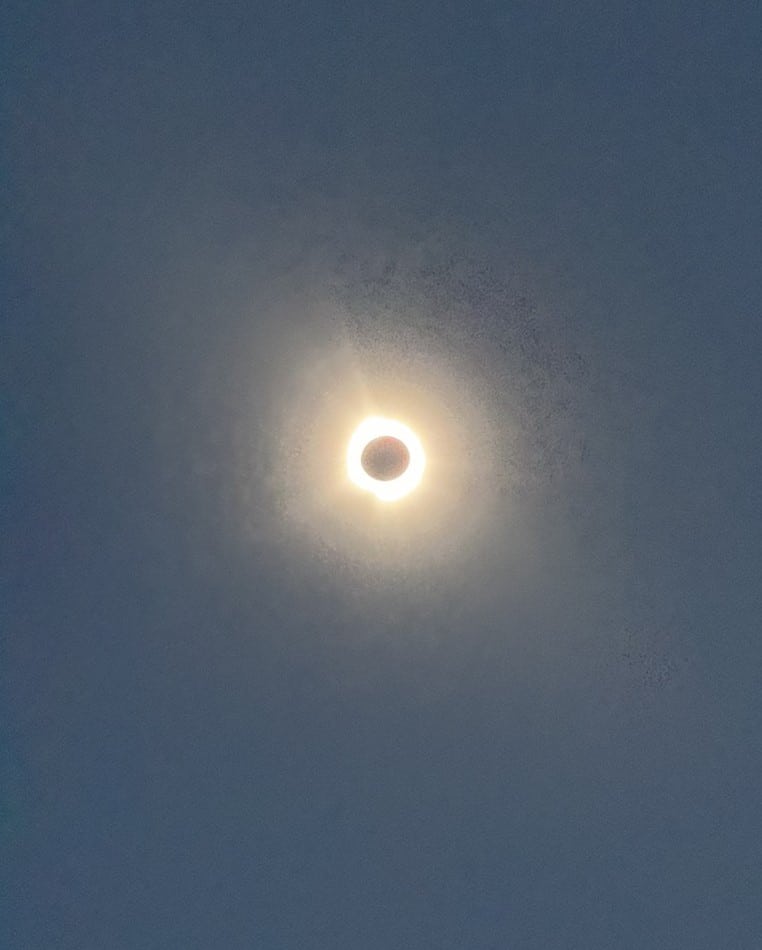Witnessing Monday’s total solar eclipse was an absolutely incredible experience! Where we are in Florida, we had about 60% blockage so it was only a partial solar eclipse, but there were still cool sightings and measurements taken. For a few hours, we were able to go outside and use our solar eclipse glasses to safely view the moon slightly covering the sun. Even some shadows on the ground from surrounding trees would show a crescent-like shape! Meanwhile, lucky members of the StellarNet team had the privilege of witnessing the total solar eclipse in person!
Facts about Solar Eclipses
- Types: Solar eclipses come in three main types: total, partial, and annular, determined by the alignment of the sun, moon, and Earth.
- Frequency: Total solar eclipses occur roughly every 360 years at a given location, while partial eclipses happen about twice a year globally.
- Duration: Total solar eclipses last a few minutes, with partial eclipses lasting several hours.
- Path of Totality: This narrow corridor on Earth’s surface is where the total phase of an eclipse is visible, providing a complete obscuration of the sun by the moon.
- Safety: Viewing eclipses requires precautions to prevent eye damage, such as specialized solar viewing glasses or filters.
- Scientific Research: Eclipses offer opportunities for studying the sun’s corona, solar flares, and Earth’s atmosphere.
- Future Eclipses: Predictable with mathematical models, future eclipses will occur in different parts of the world.
Partial Solar Eclipse Spectral Measurements
This time lapse video shows measurements taken with our StellarNet BLACK-Comet-SR, 600um Fiber, and CR2 Cosine Receptor, capturing the partial solar eclipse in Tampa, FL. Here we are measuring the irradiance of the sun during the eclipse. The measurement starts minutes before the eclipse and measures through to ~65% eclipse coverage. Measurements were taken at 40ms with 25 scans to average. Data was recorded with the Episodic Data Capture feature in StellarPro – saving measurements at a 5s interval.
During a partial solar eclipse, the alignment of the sun, moon, and Earth causes the moon to partially block the sun’s light. Unlike a total solar eclipse, where the sun is completely obscured by the moon within the path of totality, during a partial eclipse, only a portion of the sun is covered. This creates a noticeable decrease in the sun’s brightness and can cast a distinct shadow on Earth. Depending on the degree of coverage, observers may notice a crescent-shaped portion of the sun remaining visible.
The Total Solar Eclipse
We also had some StellarNet Team members in St. Louis, Missouri where they experienced totality and took this picture! During a total solar eclipse, the moon moves directly between the Earth and the sun, completely blocking out the sun’s bright disk. This alignment casts a shadow on Earth, creating a temporary period of darkness known as totality within a narrow path on the Earth’s surface.
During totality, the sun’s outer atmosphere, called the corona, becomes visible to the naked eye. The corona appears as a pearly white halo surrounding the dark silhouette of the moon. Additionally, the sudden darkness of totality causes stars and planets to become visible in the daytime sky, and the temperature can drop noticeably.






